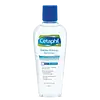What's inside
What's inside
 Key Ingredients
Key Ingredients

 Benefits
Benefits

 Concerns
Concerns

 Ingredients Side-by-side
Ingredients Side-by-side

Water
Skin ConditioningCyclopentasiloxane
EmollientDipropylene Glycol
HumectantAloe Barbadensis Leaf Juice
Skin ConditioningCucumis Sativus Fruit Extract
EmollientPanax Ginseng Root Extract
EmollientCamellia Sinensis Leaf Extract
AntimicrobialGlycerin
HumectantPotassium Phosphate
BufferingDipotassium Phosphate
BufferingPoloxamer 184
EmulsifyingBenzalkonium Chloride
AntimicrobialTetrasodium EDTA
Benzyl Alcohol
PerfumingSodium Chloride
MaskingCitric Acid
BufferingAllantoin
Skin ConditioningWater, Cyclopentasiloxane, Dipropylene Glycol, Aloe Barbadensis Leaf Juice, Cucumis Sativus Fruit Extract, Panax Ginseng Root Extract, Camellia Sinensis Leaf Extract, Glycerin, Potassium Phosphate, Dipotassium Phosphate, Poloxamer 184, Benzalkonium Chloride, Tetrasodium EDTA, Benzyl Alcohol, Sodium Chloride, Citric Acid, Allantoin
Water
Skin ConditioningCyclopentasiloxane
EmollientCyclohexasiloxane
EmollientIsohexadecane
EmollientButylene Glycol
HumectantSodium Citrate
BufferingCitric Acid
BufferingBenzalkonium Chloride
AntimicrobialParfum
MaskingDisodium EDTA
Poloxamer 184
EmulsifyingBenzyl Alcohol
PerfumingCetrimonium Chloride
AntimicrobialDipotassium Glycyrrhizate
HumectantOryza Sativa Bran Extract
Skin ConditioningPhaseolus Radiatus Seed Extract
Skin ConditioningCitrus Aurantium Dulcis Fruit Extract
MaskingCarica Papaya Fruit Extract
Skin ConditioningCI 42090
Cosmetic ColorantWater, Cyclopentasiloxane, Cyclohexasiloxane, Isohexadecane, Butylene Glycol, Sodium Citrate, Citric Acid, Benzalkonium Chloride, Parfum, Disodium EDTA, Poloxamer 184, Benzyl Alcohol, Cetrimonium Chloride, Dipotassium Glycyrrhizate, Oryza Sativa Bran Extract, Phaseolus Radiatus Seed Extract, Citrus Aurantium Dulcis Fruit Extract, Carica Papaya Fruit Extract, CI 42090
Ingredients Explained
These ingredients are found in both products.
Ingredients higher up in an ingredient list are typically present in a larger amount.
Benzalkonium Chloride is a preservative. It can cause irritation and worsen eczema.
Benzyl Alcohol is most commonly used as a preservative. It also has a subtle, sweet smell. Small amounts of Benzyl Alcohol is not irritating and safe to use in skincare products. Most Benzyl Alcohol is derived from fruits such as apricots.
Benzyl Alcohol has both antibacterial and antioxidant properties. These properties help lengthen the shelf life of products. Benzyl Alcohol is a solvent and helps dissolve other ingredients. It can also improve the texture and spreadability.
Alcohol comes in many different forms. Different types of alcohol will have different effects on skin. This ingredient is an astringent alcohol.
Using high concentrations of these alcohols are drying on the skin. They may strip away your skin's natural oils and even damage your skin barrier. Astringent alcohols may also irritate skin.
Other types of astringent alcohols include:
According to the National Rosacea Society based in the US, you should be mindful of products with these alcohols in the top half of ingredients.
Any type of sanitizing product will have high amounts of alcohol to help kill bacteria and viruses.
Learn more about Benzyl AlcoholCitric Acid is an alpha hydroxy acid (AHA) naturally found in citrus fruits like oranges, lemons, and limes.
Like other AHAs, citric acid can exfoliate skin by breaking down the bonds that hold dead skin cells together. This helps reveal smoother and brighter skin underneath.
However, this exfoliating effect only happens at high concentrations (20%) which can be hard to find in cosmetic products.
Due to this, citric acid is usually included in small amounts as a pH adjuster. This helps keep products slightly more acidic and compatible with skin's natural pH.
In skincare formulas, citric acid can:
While it can provide some skin benefits, research shows lactic acid and glycolic acid are generally more effective and less irritating exfoliants.
Most citric acid used in skincare today is made by fermenting sugars (usually from molasses). This synthetic version is identical to the natural citrus form but easier to stabilize and use in formulations.
Read more about some other popular AHA's here:
Learn more about Citric AcidCyclopentasiloxane, or D5, is a silicone used to improve texture of products and trap moisture.
D5 is considered lightweight and volatile. Volatile means it evaporates quickly after application. Once evaporated, D5 leaves a thin barrier that helps keep skin hydrated.
It is also an emollient. Emollients help soften the skin and prevent water loss. Silicones create a silky texture in products. D5 helps other ingredients become more spreadable.
Studies show D5 is safe to use in skincare products. We recommend speaking with a skincare professional if you have concerns.
Learn more about CyclopentasiloxanePoloxamer 184 is a surfactant and emulsifier made from polyoxyethylene and polyoxypropylene units.
It allows ingredients that don't normally mix (like water and oil) to blend together and stay stable; this makes it easier for cleansers and makeup removers to grab onto dirt, oil, and makeup to be rinsed away more easily.
Water. It's the most common cosmetic ingredient of all. You'll usually see it at the top of ingredient lists, meaning that it makes up the largest part of the product.
So why is it so popular? Water most often acts as a solvent - this means that it helps dissolve other ingredients into the formulation.
You'll also recognize water as that liquid we all need to stay alive. If you see this, drink a glass of water. Stay hydrated!
Learn more about Water